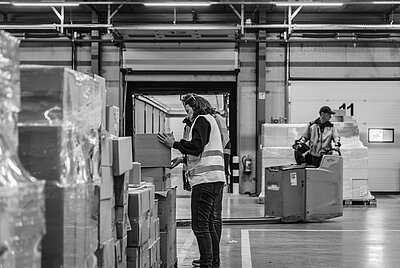The real value lies in your value chain
A recent report by Boston Consulting Group (BCG), shows that large retailers are way off target to meet their carbon emissions goals with some even yet to set any targets.
The reason for this is that many retailers are failing to look at, and address, the impact within their value chain. And this is a big problem. The report by BCG shows that retailers’ supply chains are responsible for more than 25% of global emissions. Not only that, but retailers are responsible for 40% of the world’s plastic use.
It’s understandable why retailers are slow to respond to this. Assessing the environmental impact of your supply chain is a large, time-consuming task. There are no quick wins. But as our own experience shows, the gains are potentially huge for retailers.
Bringing your plastic consumption under scrutiny, looking at the distances your products are travelling across the supply chain or even surveying your customers to find out how they are disposing of packaging and products at the end of their life can bring immense value to shape your sustainability agenda.
And the financial benefits are clear too. From increasing your market share and improved brand loyalty, to supply chain stability. By focussing your efforts for the long term, you can bring true value into your value chain.
Be smart with premium pricing
A 2021 survey by McKinsey & Company explained that consumers surveyed across Austria, Germany and Switzerland were willing to pay a premium for sustainable products. It states: “Our research shows that these two goals—of sustainability and business success—indeed go hand in hand: sustainable actions pay off and a positive link exists between ESG and financial performance.”
Many consumers are spending on, and demanding, more sustainable ranges of products and research shows that this is an important trend for retailers to capitalise on. Paying attention to customers’ greener thinking can enable retailers to create effective marketing campaigns alongside in-demand products. If consumers can directly see the eco benefits that they want, they are more inclined to purchase at a higher cost. Fruit and vegetables, skin care and household detergents were among some of the most popular items identified by McKinsey & Company’s survey.
In Hubspot’s Sustainable Marketing: Key Principles & How to Leverage It, it emphasises a consumer-oriented approach to developing and marketing your products: “With consumer-oriented marketing, it’s more about understanding your customers’ needs and tailoring your marketing to that.”
If you’ve previously considered sustainable product options as too expensive, then perhaps it’s time to explore your customer base and find out which items they are prepared to spend more on for better sustainability credentials. And speak to your GNFR supplier for advice as there have been many developments here too.
Deliver with data
Using your customer data to make key decisions about your delivery options could also have a dramatic impact on your carbon emissions – and how your customers feel about your brand.
Whether you deliver from your own fleet of vehicles or partner with a delivery organisation, understanding how your customers want to receive their orders and your impact on the environment will enable you to make key decisions around delivery.
In 2020, Amazon introduced 1,800 electric delivery vans across Europe to combat rises in emissions thanks to the influx of orders during the pandemic, removing thousands of tonnes of carbon emissions.
If you have a strong bricks and mortar presence, then does improving your click and collect service mean shorter journeys, with less emissions, than a last mile delivery service?
Or is being transparent with customers during the online check out process more beneficial to you? Giving customers a slower, but greener delivery service enables them to become part of the process of long-term change – you can even show them how much they will be helping to reduce emissions, either when they check out or by an annual email that shows them how much they’ve helped to save the planet.
Taking stock of how your delivery options impact the environment, and using your own data to drive decision making is a smart move for 2023.
If you’re ready to smarten up your sustainability goals for 2023, then speak with us on +31 (0) 88 494 20 80 or email us at online@worldpack.eu


